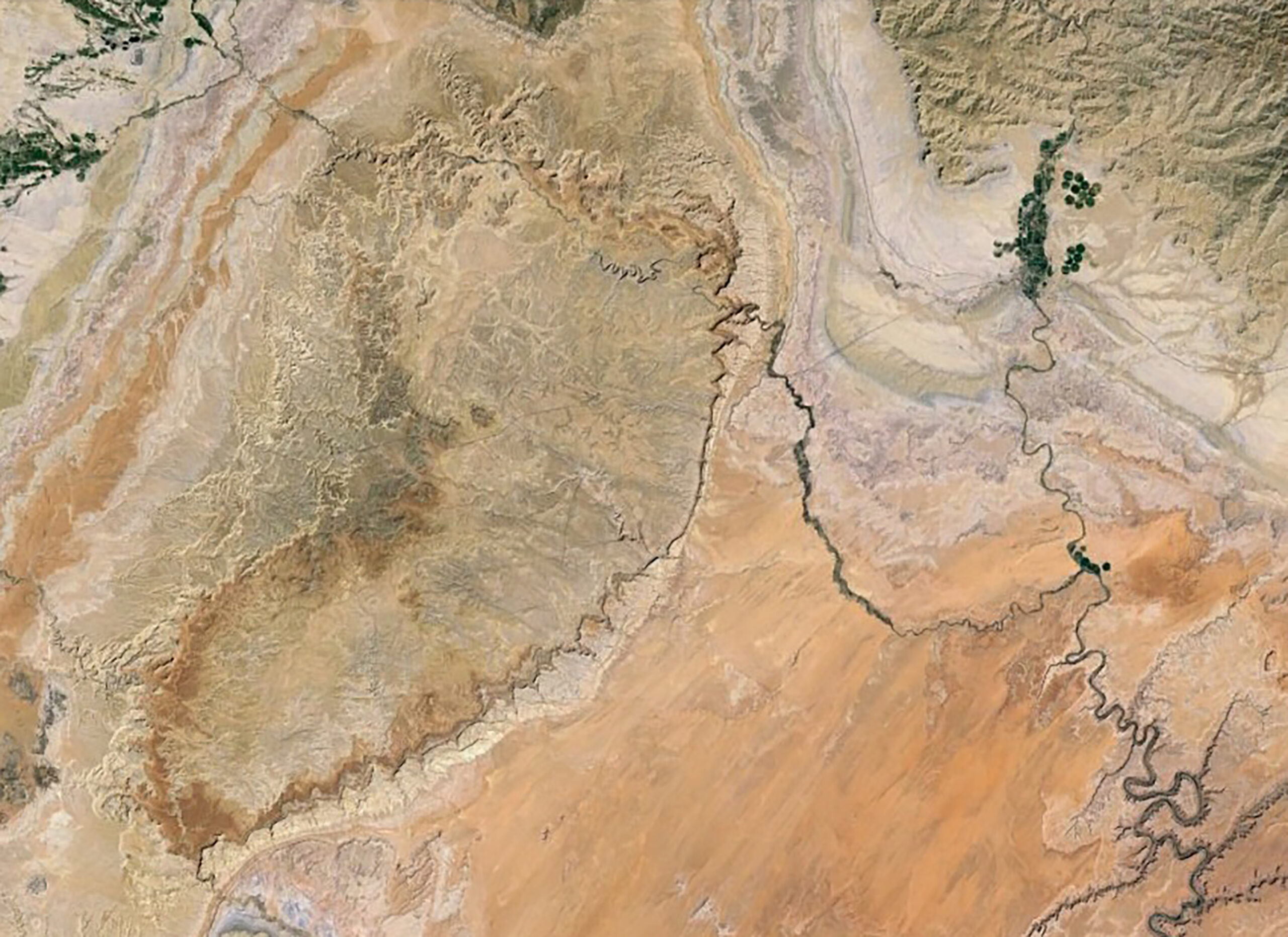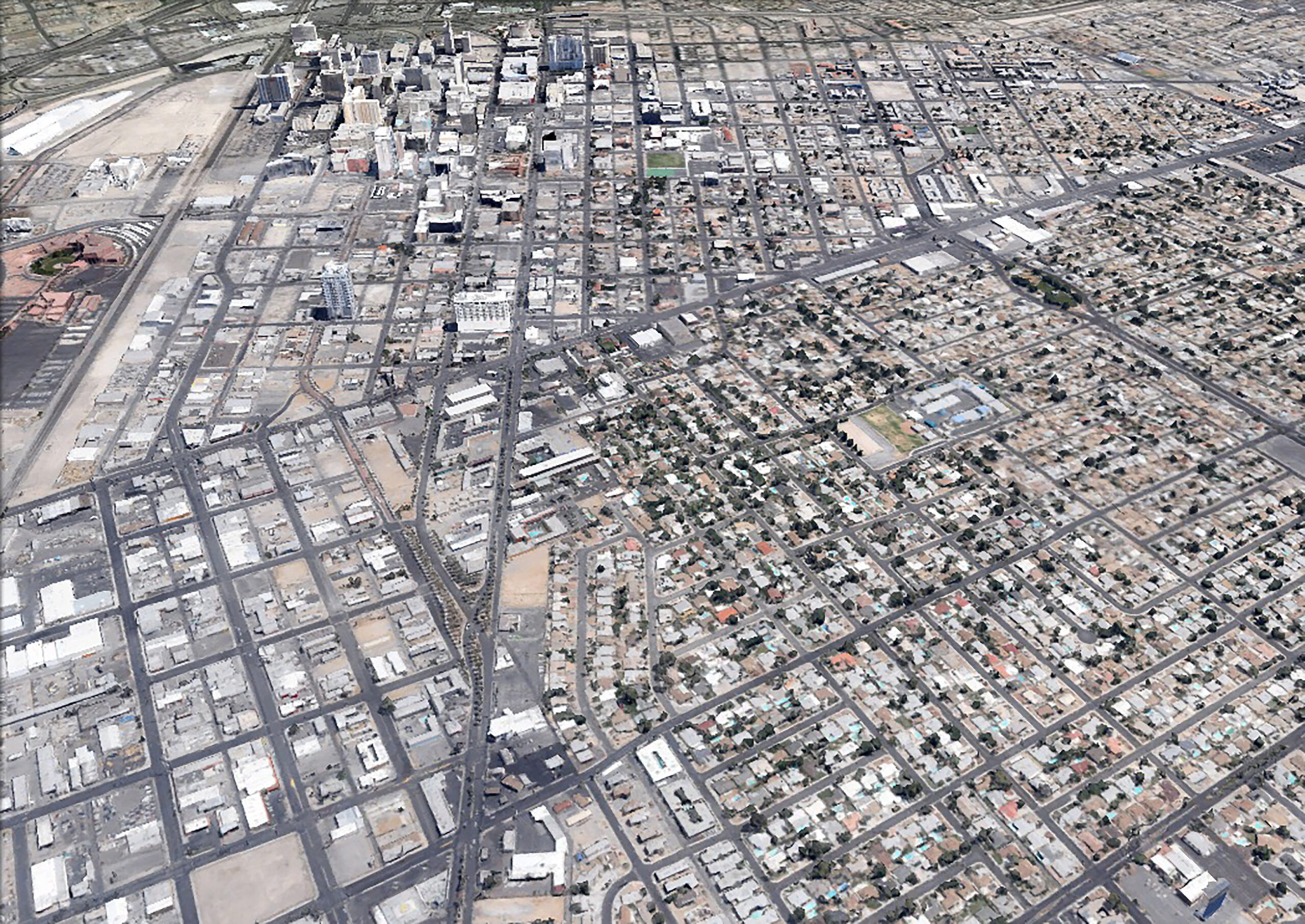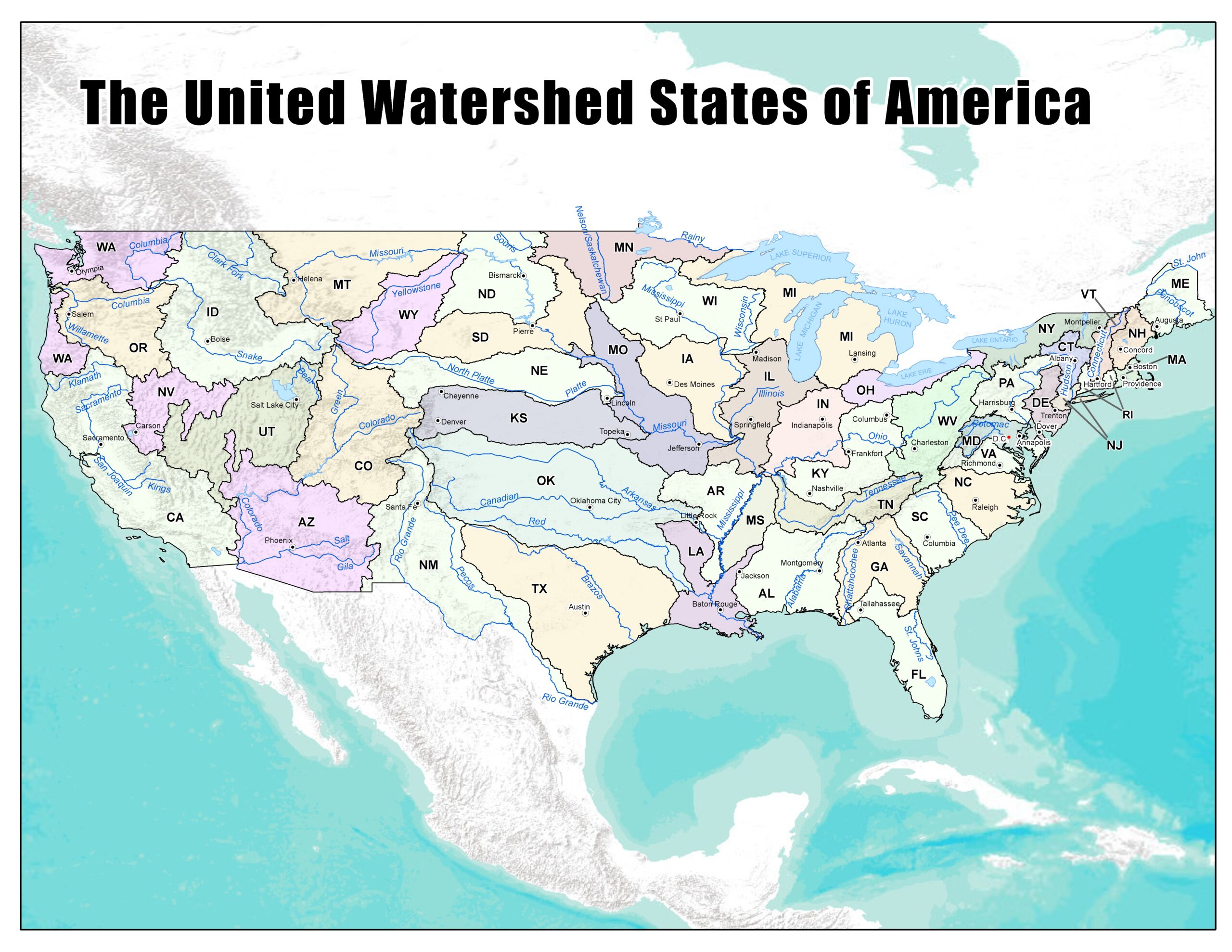In July 2013, Todd Wynward sat down with author and activist Ched Myers to discuss the concept of watershed discipleship and dream about building an alliance among faith-rooted groups engaged in localized, bioregional living. Below are Todd’s reflections.
Might watershed discipleship be the good news that we so desperately need to rouse us from our paralysis?
I don’t have an easy relationship with institutional Christianity. All too often, organized religion ends up supporting the warlike tendencies, ravenous greed, and socioeconomic inequities from which Jesus sought to liberate us. In our missionary zeal to share our affluent North American version of Christianity, we spread a lot of bad habits along with good news. Our religion, tied so closely to American militarism and capitalism, has lost much of its ability to be prophetic or transformative in today’s world. Most modern secular progressives view Christianity as a laughable superstition, if not downright dangerous and destructive.
Perhaps the truly urgent “mission” today is not to save others but to save ourselves. Perhaps it is our culture and our religion that need converting. As a North American steeped in a culture of affluenza, I have to agree with Ched Myers’s stark analysis of our current condition: modern Western society lies drugged in an “ecocidal slumber.” We’re fully aware our actions are causing the corrosion of earth’s basic life-sustaining systems. We know we could make better choices. Yet we lay paralyzed, trapped by our compulsive habits and comfortable lifestyles.
Ched holds up a strange hope to our postmodern paralysis: the Bible. He asserts that “the prophetic traditions indigenous to both testaments may alone be capable of rousing us” from our addictive malaise.
The Bible—our best spur toward urgent action?
It’s an unconventional hope for modern progressives who—for good reason—run away from anything claiming to be “Bible-based.” Yet Ched contends the Bible might be the best tool available to get modern America to drop the iPad and get off the couch.
It’s an interesting proposition. Do ancient scriptures hold enough social critique to radicalize slumbering evangelicals AND enough social credibility to galvanize cynical progressives? Perhaps. Ched thinks so. He describes the power of the prophetic strands that weave through the Bible: The reflective poems, warning tales, grand sagas, and radical histories of Scripture summon us to remember our origins and the ways of our ancestors, invite us to imagine and work for a restorative future, and call us to liberate and heal ourselves and our home places.
Reform of habits—such as recycling, eating locally, and shopping responsibly—is important, Ched affirms, but to become the people we need to be to face our environmental crisis, we’ll need to do much more: we’ll need to practice transformed living through watershed discipleship.
Watershed discipleship? It’s an odd, almost jarring term, invoking and synthesizing two domains rarely joined in our imaginations: one scientific, the other religious. Yet I’m becoming convinced it is exactly this kind of unitive consciousness—both data-driven and deeply spiritual—that is needed if we are to play any significant role in our planet’s healing.
I agree wholeheartedly with Ched that those seek to practice watershed discipleship must embrace the motto: “We will not save a place we do not love; we cannot love a place we do not know.” Knowing a particular place—experiencing its characteristics and being molded by its constraints, its bounty, and its boundaries—is essential to watershed discipleship. It is the “re-placed” identity we as a species must vitally embody if we are to rouse from ecocidal slumber.
So what is watershed discipleship, exactly? As a fledgling movement emerges, it’s clear that no one knows quite yet. It’s the kind of “guiding framework” that could motivate us to move mountains of malaise and despair, but it needs some clarity. Watershed discipleship remains a work-in-progress, an intriguing and powerful concept only discovered and defined as we live it out in our places each day. To be a disciple within my watershed is a concept I understand; to be a disciple of my watershed is a concept I want to explore.
Region As Rabbi
Watershed discipleship, when lived out in daily practice, actively resists our culture of affluenza and converts us to Sabbath living. Sabbath living, as Ched writes, is the antithesis of conspicuous consumption; rather, it is about gift and limits: “the grace of receiving that which the Creator gives, and the responsibility not to take too much, nor to mistake the gift for a possession.”1
Is this what Jesus meant when he said the meek shall inherit the earth (Matt 5:5)? The ancient Hebrew for meek is ⁽ ānāw—meaning the humble, those who do not grasp and hoard, those who do not think too highly of their own importance and needs. Is Jesus saying these are the ones who can coexist and live within the blessing of creation, while the haughty and the grasping are unable?
Through the lens of watershed discipleship, another of Jesus’ well-known sayings takes on new meaning: “Consider the lilies of the field” (Matt 6:25). Jesus seems to be saying, “Examine how the lilies thrive where they are planted; model your life upon what they teach you.” Be a student of God’s creation that thrives in your watershed. See your region as your rabbi.
Seeing your watershed differently leads to acting in your watershed differently. As I learn to re-inhabit the place I live, I’m seeing my region as my rabbi in three specific ways.
Watershed as Sustainer, Teacher, and Corrector
Try on this idea: All of my food needs, my watershed can provide. Sounds crazy? It does to me. I mean, I know most human societies for all of history were sustained by their watersheds, but those were primitive people, primitive times, right? What about my Italian parmesan and my Florida orange juice? What about my olive oil and coconut milk?
Can all the items my family loves be sourced in my bioregion? Of course not. But this line of inquiry leads me to pursue two questions. First: How much of what we desire can be sourced from our watershed? In the high deserts of New Mexico where I live, the answer is bleak. For my family to obtain what we like eating, I’d have to drive hundreds of miles before I found the first orange tree or avocado orchard. This leads me to a second question: To what extent can we become creatures who thrive within the limits of our bioregion? In other words, to what extent can we adapt?
Wait—me, adapt my wants to my watershed? As an entitled American consumer steeped in egocentric values, this suggestion is not only absurd; it is scandalous. I’m trained to buy whatever I want whenever I want, without a second thought to planetary consequences. To be asked to limit my lifestyle, to curb my appetites, fills a part of me with indignant fury and fear. “I’m an American!” I want to roar.
Yet my watershed, my rabbi, corrects my spoiled behavior. Just like in any master refines and re-forms an immature or out-of-shape disciple, my rabbi corrects me as part of my training. This is a kind of conversion, metanoia, or transformation of worldview and habits that early followers of Jesus underwent. They were taught to walk away from the self-advancing values of Empire and instead care for the poor, love their neighbors, and anticipate a modest bounty of daily bread. These age-old precepts were central to the teachings of Jesus; they are equally central to the teachings of my watershed. They cause me to look anew at the two troubling and transformative questions raised earlier: What can my watershed provide? How can I adapt my wants?
A few years ago, some neighbors and I decided to have some fun with these questions. Instead of bemoaning the arid sparseness of northern New Mexico’s high country, we began to explore what kinds of food sources could thrive in our dry mountain environment. At the same time, with a perverse joy, we began to break from Empire-based thinking and explore whether we could learn to be happy with what our watershed provided. My ranching friend, Daniel, has managed small herds to see which livestock could thrive with minimal inputs while being maximally useful to us. What has he found? Goats and sheep, we want to keep. They adapt well to our bioregion, are fairly easy to manage, and provide milk, cheese, meat, kefir, and yogurt. But yaks? Not so much. After five years of experimentation and hard work, Daniel concluded that they’re substantially more trouble than they’re worth. As for vegetables and fruits, we’ve found success with plenty of the usual fare—carrots, onions, beets, tomatoes, zucchini, apples, plums, and greens galore. Also, under the guidance of my mentor gardener Seth, I’ve adapted my habits and taste buds to foods that can thrive in my region. I now appreciate hand-ground cornmeal, new types of beans, high-altitude quinoa, plum preserves, wild amaranth and lamb’s quarters, sorrel, kale chips, broccoli leaves, and unfamilar varieties of squash and potatoes.
I’m finding that many of my current life practices—habits formed unconsciously growing up within a culture of excess—have no part in the life of a watershed disciple, nor of a serious Jesus follower. Even as I adapt, however, a large part of me wants to remain an unconscious and self-absorbed consumer, a well-trained cog of empire. Are you feeling it too? We both know it’s easier to remain a spoiled child instead of becoming a responsible adult. Yet in this “watershed” moment of history—with our existence in the balance—it’s clear the earth itself is calling affluent North Americans to do something old-fashioned: repent, turn around. To exist within the limits of our watersheds, we’ll need to release our attitudes of entitlement and re-program our voracious appetites.
Toward A Bioregional Food Covenant
What concrete steps can we take to thrive within the bounty—and the boundaries—of our bioregions? If we are to survive much longer as a species, many of us infected with unbounded affluenza need to make this question central to our lives. As David Orr writes: “It makes far better sense to reshape ourselves to fit a finite planet than to attempt to reshape the planet to our infinite wants.”2
My wife and I have done a bit to reshape ourselves to our region: we live in a yurt in the Sangre de Cristo mountains near Taos, New Mexico. We milk goats, shear sheep, plant trees, catch water, and try to grow a lot of our food in the high desert. My wife and I each have more than two decades of experience as wilderness educators, river guides, and camp directors. Both of us have spent more than a thousand days—three years of our lives—in open country and in wilderness, sleeping under the stars. More than once we have been called feral. Recently, a citified visitor from Philadelphia giggled in awe when she entered our small dwelling, and immediately started snapping photos. She simply couldn’t believe we use a composting toilet and carry water to our yurt by hand in buckets, like millions of people across the world.
Before you get too impressed, let’s be clear: we’re pretenders. My family still has laptops and a cappuccino maker, cell phones and Netflix. We daily take our son to soccer practice in a Prius and monthly drive a hundred miles to shop at the nearest Trader Joe’s. Even though we homestead in the high country, we’re still entangled in Empire.
What’s a concrete step we can take to begin localizing our appetites? Here’s a practical idea that might incite a movement: a 25/75/100 Bioregional Food Covenant. To join, an individual would make this pledge: “By the year 2025, I will source 75% of my food from within 100 miles.” The specific numbers I’ve chosen are, by nature, arbitrary; yet if a 25/75/100 covenant can be attained in our challenging high desert climate here in northern New Mexico, then likely it’s a covenant that could be made by most Americans.
Can a modest personal vow like this make a big difference? In light of the massive global crises we face, an individual vow may seem ludicrous. But think again: if a critical mass is reached, a humble vow like this could change how humans live on our planet. Let us count the ways:
It enriches local economies. Thousands of families committing locally for the long term establishes new demand and new markets, creating an incubator for regional companies to grow, sell, and distribute good food within their communities. Hard-earned cash becomes “slow money,” circulating longer within the region, causing more healthy cycles of exchange for local goods and services. Right now, there are few local growers and very little local food available in America, because most of us don’t demand it.
It corrects our crazy consumption. Sourcing much of our food locally means adapting to our watershed, letting it instruct us how to be. It means learning to live within healthy natural limits. It means no longer being able to buy whatever I want whenever I want from wherever I want, without a second thought to planetary consequences.
It improves individual health. Kale or Krispy Kreme? This may not be a fair comparison, but the point is this: when communities encourage one another to eat food produced off the land, better health is likely to develop. Affordable access to farm-fresh food is a promising antidote to many of modern society’s illnesses.
It reduces petroleum, packaging, and pollution. Currently, the majority of mega-chain food travels a thousand miles or more to reach your local grocery store. Massive amounts of petroleum are used to improve soil, grow, process, store, preserve, package, and deliver food that could be grown and transported within a few miles of home. Reduced travel and storage means reduced packaging and pollution.
It encourages active citizenship. Once we commit to eat from our bioregion, we naturally care much more about its health—about the quality of the water, soil, and air around us. We see the beautiful complexity of the interconnected living systems required to produce good food. We start organizing in creative and clarifying ways like the New Mexico Coalition for Community Rights. This organization encourages regional groups to adopt Community Bills of Rights, asserting that corporations are not above people, and declaring that all citizens of a watershed have an inalienable right to clean air and clean water.
It boosts “community resilience”—the ability of one’s home region to thrive in the face of change and shocks from the outside, as articulated by Transition Network founder Rob Hopkins.3 A bioregional food covenant would build local capacity and infrastructure, reduce dependency upon external providers, promote sustainability, and increase biological diversity in one’s region.
The 25/75/100 Bioregional Food Covenant is a practical idea that might incite a movement. What might our nation look like if a groundswell of communities across the country took on this covenant and patiently worked with their farmers and sellers to obtain 75% of their food from their own region by 2025?
Watershed discipleship, based on the prophetic tradition, is a promising hope for rousing the culture; a bioregional food covenant, based on Watershed Discipleship values, is a promising action that might just convert the culture. It might just be the thing to rouse us from our paralysis. It might just be the antidote affluent Americans need, as a first step on the path of watershed discipleship.
Todd Wynward is a Mennonite who lives with his family in Taos, NM. He has been engaged in experiential education and social change movements for twenty years, and has spent more than a thousand nights outdoors. He is the founder of a wilderness-based public charter school, leads backpacking and river trips for adult seekers, and is an animating force behind TiLT, an intentional co-housing community. Patheos.com calls his novel The Secrets of Leaven “a delicious mystery . . . exploring deep questions.” His blog, Undomesticated, can be found at http://leavenrising.com.



